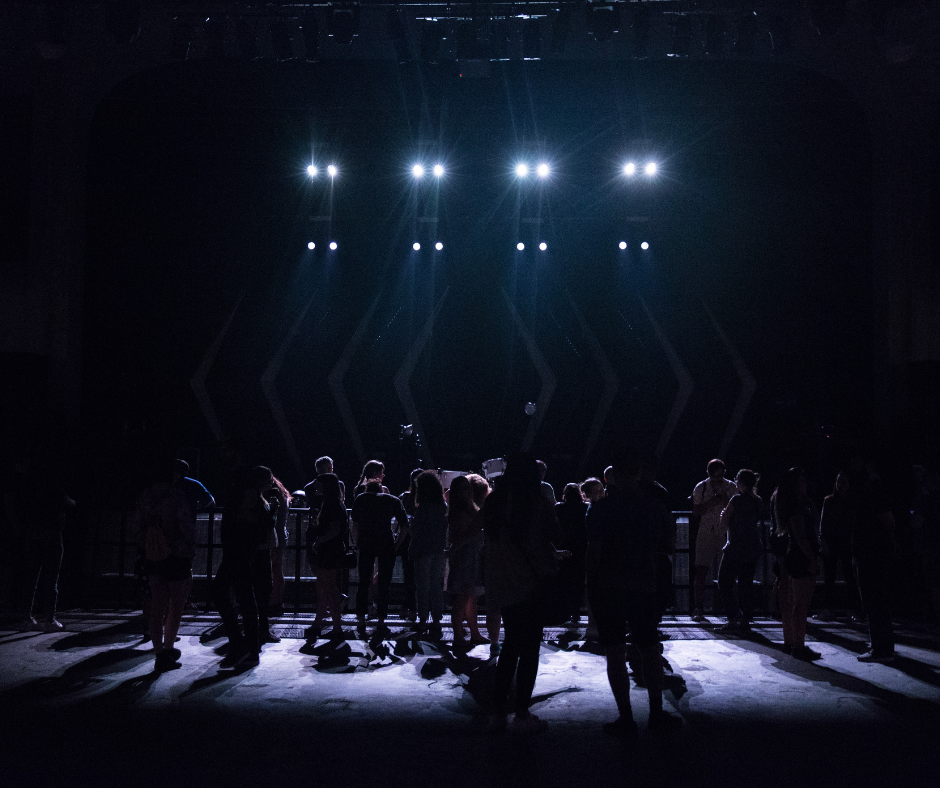The Front Row JoziStyle Files:

I’m heading out to spend an evening with Jonathan Roxmouth, and naturally, we’re going front row. You see, the last time I went to the theatre, I got stuck midway between the front row and the far back, back, back row. The sort of nosebleed section where, in old Shakespearean times, they probably allowed chickens and pigs just to keep warm. I could barely see the stage, and I thought, never again.
I am the kind of theatre-goer who needs to see the performers’ shoes. If I go to the ballet, I need to see their shoes—just double-checking they’re clean and that they match, JoziStylers. I like to see the artist’s face, whether it’s a musical or stand-up comedy. Anything less than the front row is simply a viewing failure.
Years ago, when I first started covering theatre, driving out to Joburg city was scary—more potholes and load shedding than streetlights. I preferred venues closer to home. But when I brought theatre onto the JoziStyle Show, everything changed. Suddenly, I was attending frequently, and the one thing I always enjoyed was securing those really great seats.
Key Takeaway for the Discerning Theatre Patron
For the truly authoritative and immersive theatre experience, the front row is non-negotiable, not merely for visibility, but as a deliberate statement of prestige and engagement. This seating choice, championed by JoziStyle, fundamentally changes audience behaviour, creating a ripple effect where patrons now prioritise premium, forward seating, rejecting the perceived mediocrity of the middle and back rows.
The Economics of Envy: The JoziStyle Front Row Phenomenon
It is an established fact among the industry that I possess what many publicists refer to as long, long, long, long, long, slender legs. Not chunky, chicken drumstick legs like a rugby player, mind you, but long and elegant. Because of this well-publicised physical reality, publicists would often grant me aisle seats, which I always appreciated. I found it amusing when friends tried to nab my aisle seat; I always thought, bugger that, they are my tickets!
I just always assumed the best seats must be the front row. I had to be proven right, and fate intervened during a Beatlemania tribute show. Due to a ticketing mix-up—where somebody had simply helped themselves to my designated tickets because they knew I’d get better ones—I was offered the only available seats: front row. I accepted immediately, even as I saw the glint of spotlights reflecting with envy in the glasses of my media colleagues. The FOMO was palpable.
The Power of Perception in Theatre Seating
It was months later that a friend commented, “Oh, we saw you in the front row,” proving that people remember where you sit. The front row became the conversation. When I was later relegated to a back seat for a promotion, I said to my husband, “You can’t put JoziStyle in the back row. It doesn’t look good, and it doesn’t smell good either.” It simply became a thing.
PR Feedback confirms that the #FrontRowJoziStyle phenomenon has changed ticketing dynamics. Theatres and publicists have told me that now, when they announce a new show, the first question they get from other media outlets is, “Is Edward doing #FrontRowJoziStyle?” This is because my willingness to give away ten front-row tickets—taking up the entire row—makes other media outlets who only offer two humble tickets look instantly less prestigious.
The Pre-emptive Booking Strategy
My personal expertise in generating hype is simple: I book the front row before a production is even officially announced. I tell the theatre, “If you want to do a front row promotion, I want the front row booked.” This creates a deliberate vacuum. People start complaining, asking why they can’t buy the front row tickets that have just been announced.
The result is that the “front row” for the paying public now means rows B, C, D, and E. This strategic move creates a ‘grip’ where everyone gravitates forward. Previously, the middle-middle or wing aisle seats were considered premium. Now, people buy tickets from the front row going back.
Authority vs. Pretence: The Critic’s Crisis
There is, of course, a counter-movement. I’ve also heard of critics who specifically ask not to be placed in the front row, claiming they are “serious critics” and they don’t want to do the “JoziStyle thing.”
Leading professionals agree that these are often the pretentious critics who see the front row as being too frivolous. Yet, these are often the same critics who write scathing reviews, claiming they “couldn’t bear it,” even though they were seen laughing hysterically alongside everyone else. They are the ones making a spectacle of themselves because they are terrified of being missed. The theatre is a public spectacle; if you’re a serious critic, you should be positioned to observe, and the front row offers the clearest, most unfiltered experience.
Naturally, I wouldn’t do a #FrontRowJoziStyle for every show—if it involves dangerous juggling acts with knives and fire, or is simply too serious to warrant my levity. But for a good musical, ballet, or anything entertaining, the front row works perfectly.
Comment: What are your favourite seats in a theatre or cinema?
Subscribe to JoziStyle, follow us online and listen to us on air.






